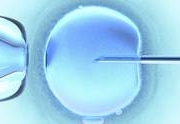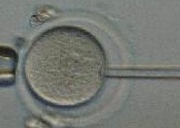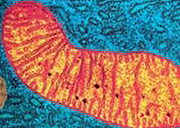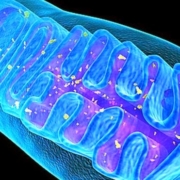Mitochondrial Donation Down Under
 ‘Maeve’s Law has just passed the Senate 37-17 and will now become law. It is globally leading mitochondrial legislation to give hope to families across Australia’ tweeted Greg Hunt, an Australian MP on March 30th 2022.
‘Maeve’s Law has just passed the Senate 37-17 and will now become law. It is globally leading mitochondrial legislation to give hope to families across Australia’ tweeted Greg Hunt, an Australian MP on March 30th 2022.
He was one of the prime movers behind the Mitochondrial Donation Law Reform (Maeve’s Law) Bill 2021, named after the young girl whose mother campaigned for the legislation. It was the first conscience vote in the Federal government for five years, but I am not sure in what sense the new law can be considered globally leading. The UK was the first country in the world to legislate for mitochondrial donation back in 2015, but it is true that no other country has done the same until Australia, although several other countries have used the technique. The news from ‘down under’ brought back some poignant memories: I was a guest on a television programme about mitochondrial donation in 2015, along with a British mother who was convinced that the technique was the only way that would enable her to have healthy genetically-related children. She was certain it would work, and it was not easy to try to indicate that it might not be as straightforward as she had been led to believe.
Mitochondria are the power stations of every cell in our bodies and when they malfunction, the resulting disorders present at any age from infancy to late adulthood. They can affect multiple organs causing a vast array of symptoms and in many cases severe disability and early death. The aim of mitochondrial replacement therapy is, in the maternal spindle transfer technique, to take the nucleus of an affected mother’s egg (which has diseased mitochondria in its cytoplasm) and put this into an enucleated donor egg with healthy mitochondria and then fertilize this reconstituted egg. This technique was first developed in mice in 1983 and early proof of principle experiments were carried out in human embryos in 2010. A variation of the technique called pronuclear transfer uses two very early zygotes shortly after fertilization instead of eggs. This will not be acceptable to those who consider life to begin at fertilization.
Concerns have also been raised about other ethical issues, however, such as the way in which the campaign to legalise mitochondrial donation in the UK ‘was characterized by the mobilization of an emotionally-driven rhetoric of hope, inaccurate and exaggerated claims regarding the purpose of this reproductive intervention by [presenting it as] a “treatment”, the use of a number of specific labels and metaphors euphemizing the presentation of the techniques and the deliberate minimization of the role of the mitochondrial donors’, and the fact that children born from it would need regular follow up.
In addition to these problems, as time has passed I am increasingly struck by how little attention has been given to the fact that not a single birth from the technique in the UK has been announced since it was legalized seven years ago.
Of course, even mentioning this inconvenient truth always runs the risk of the author being proved wrong the next day – or even the same day. Nevertheless, the fact that to date worldwide, only nine babies – one in Mexico, one in Greece and seven in Ukraine – are known to have been born through this technique should surely raise concerns about its effectiveness? The child born in Greece was not at risk of mitochondrial disease in the first place as the mother was not a carrier. The mitochondrial donation was used as a fertility treatment in the 32-year-old woman who had had four cycles of unsuccessful IVF. It is not clear either how many of the children born in Ukraine were actually at risk of mitochondrial disease.
The warning that ‘One who puts on his armour should not boast like one who takes it off,’ (1 Kings 20:11) along with concern that ‘hope deferred makes the heart sick’ (Proverbs 13:12) should surely make clinicians and politicians alike ask difficult questions about why so few children have resulted from mitochondrial donation. Let’s pray this law actually delivers hopes fulfilled to more families at risk of mitochondrial disease in Australia than it has to date in the UK.
Trevor Stammers is a CMF Associate in Public Policy










Leave a Reply
Want to join the discussion?Feel free to contribute!